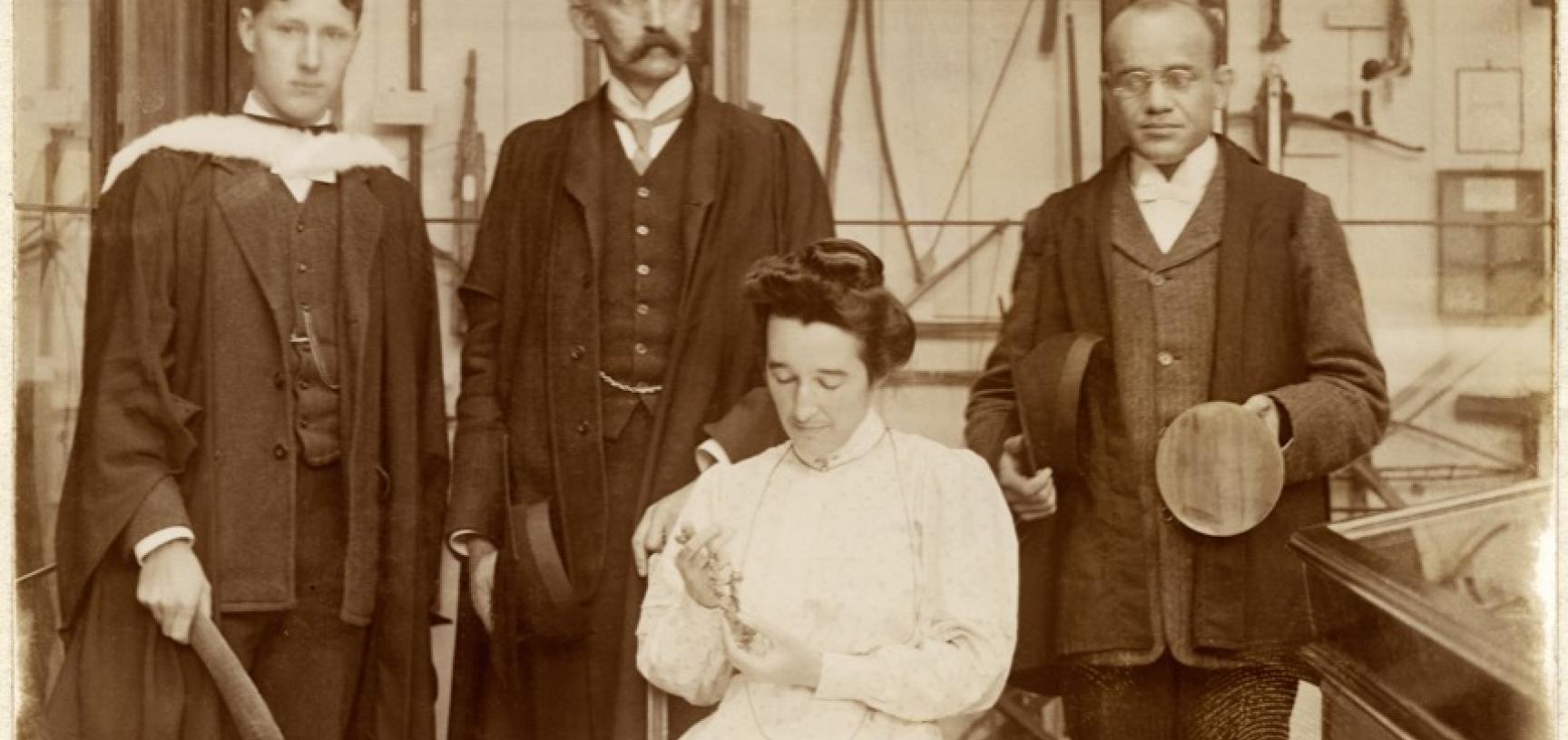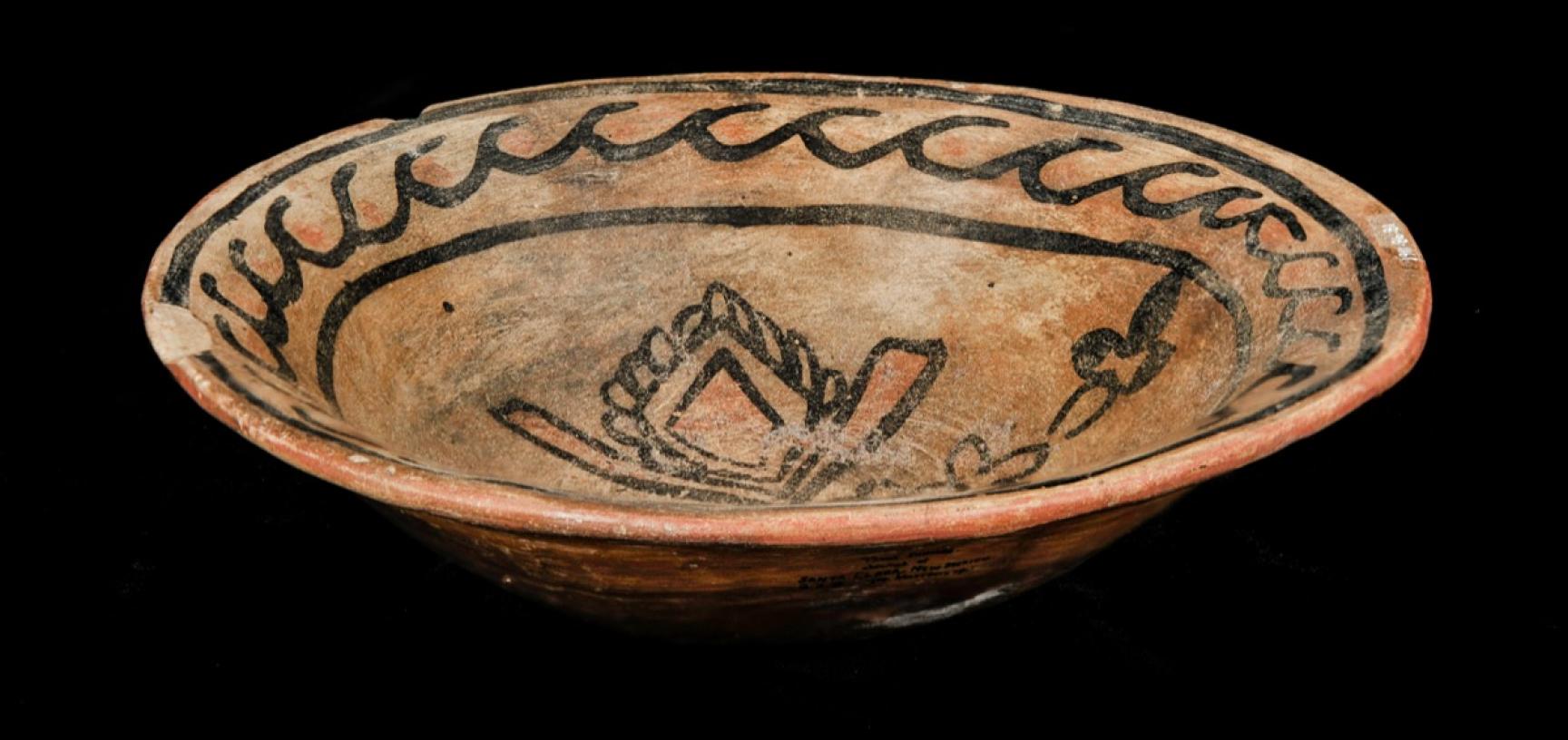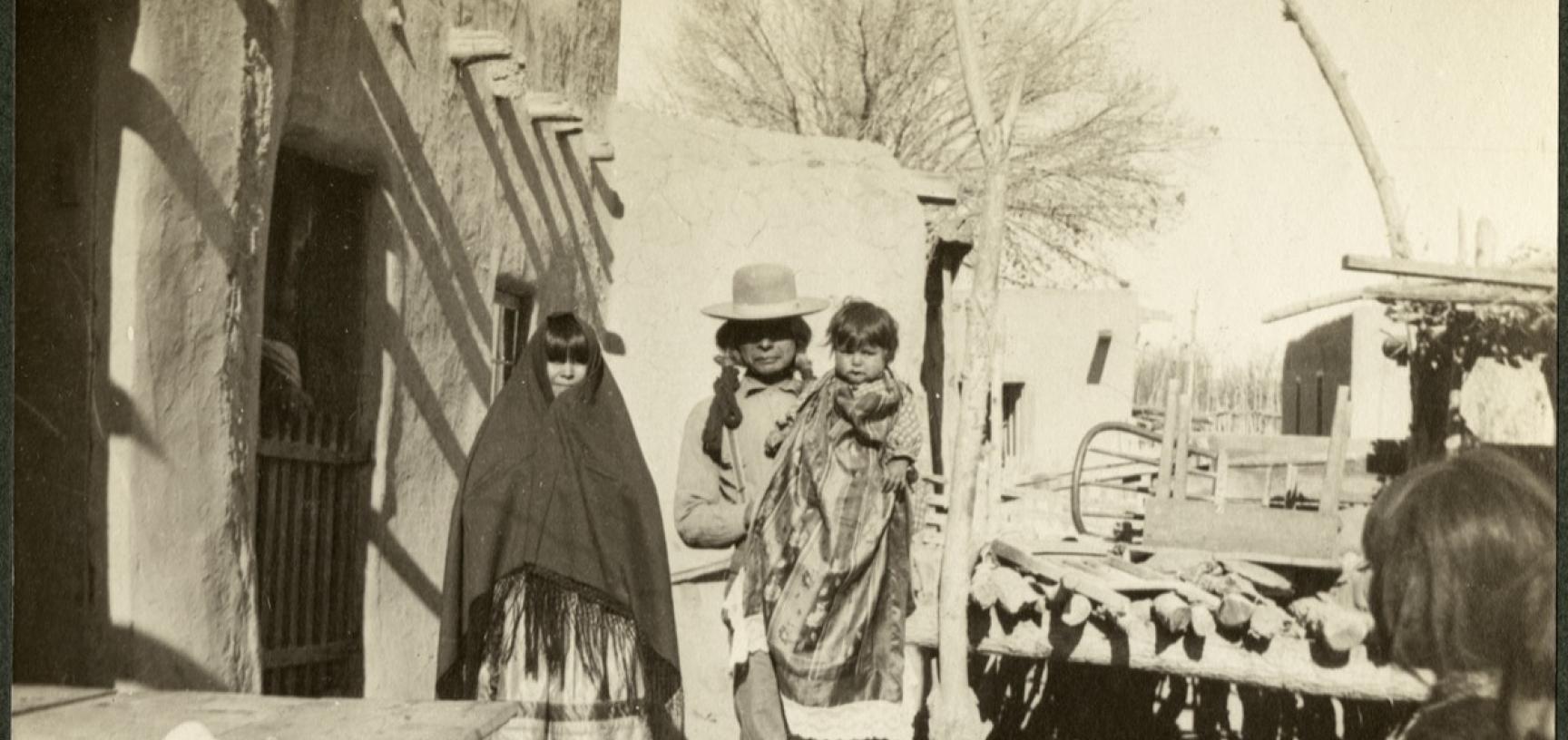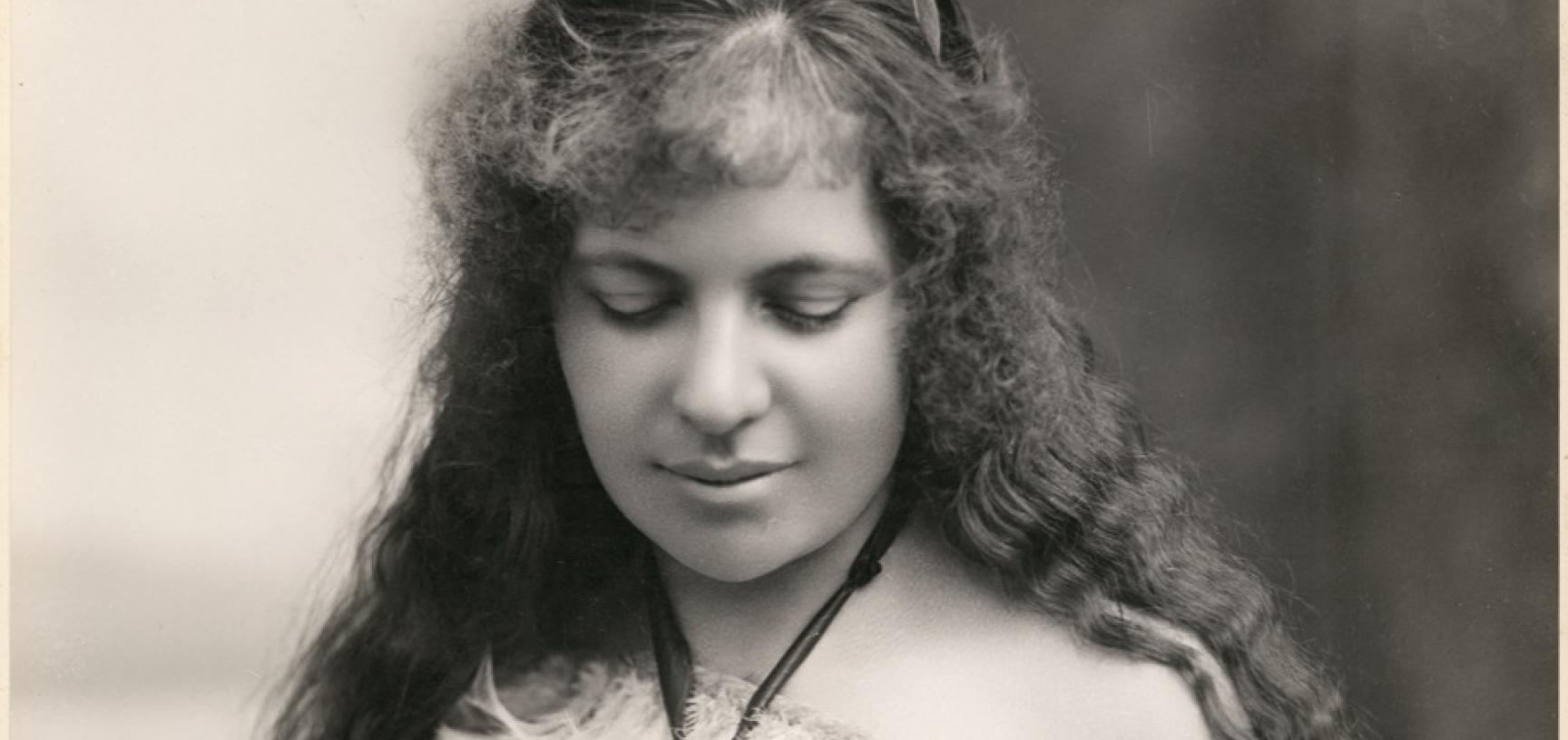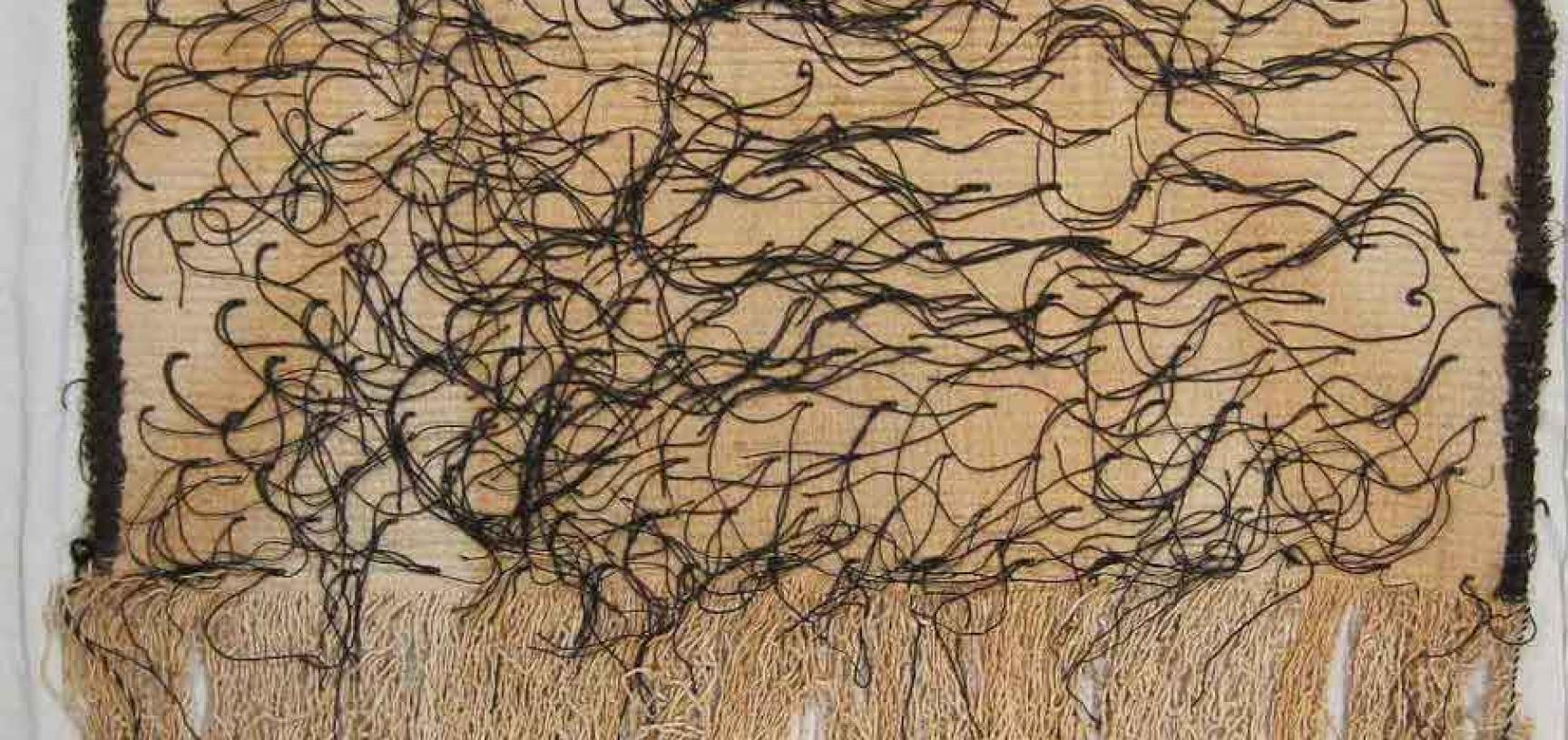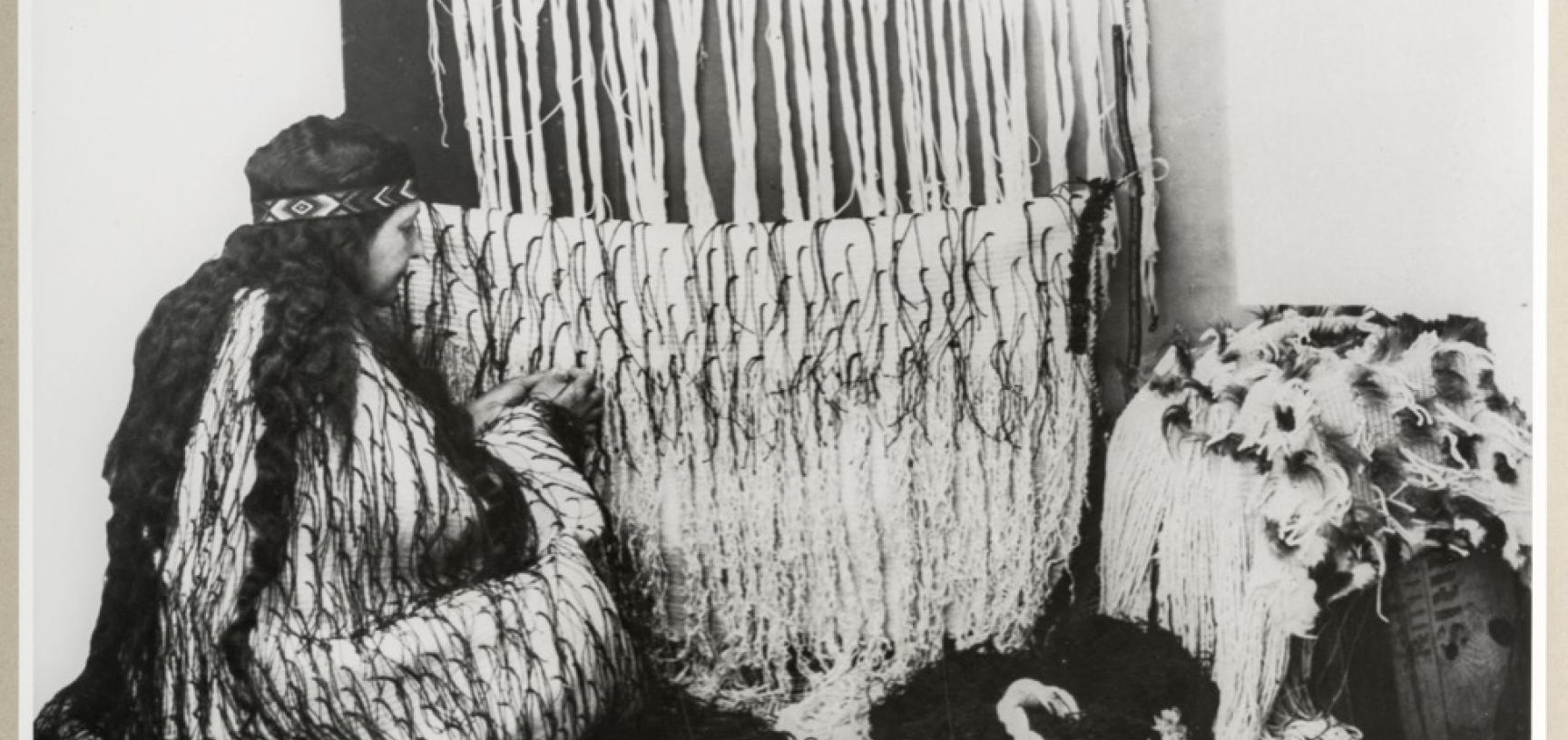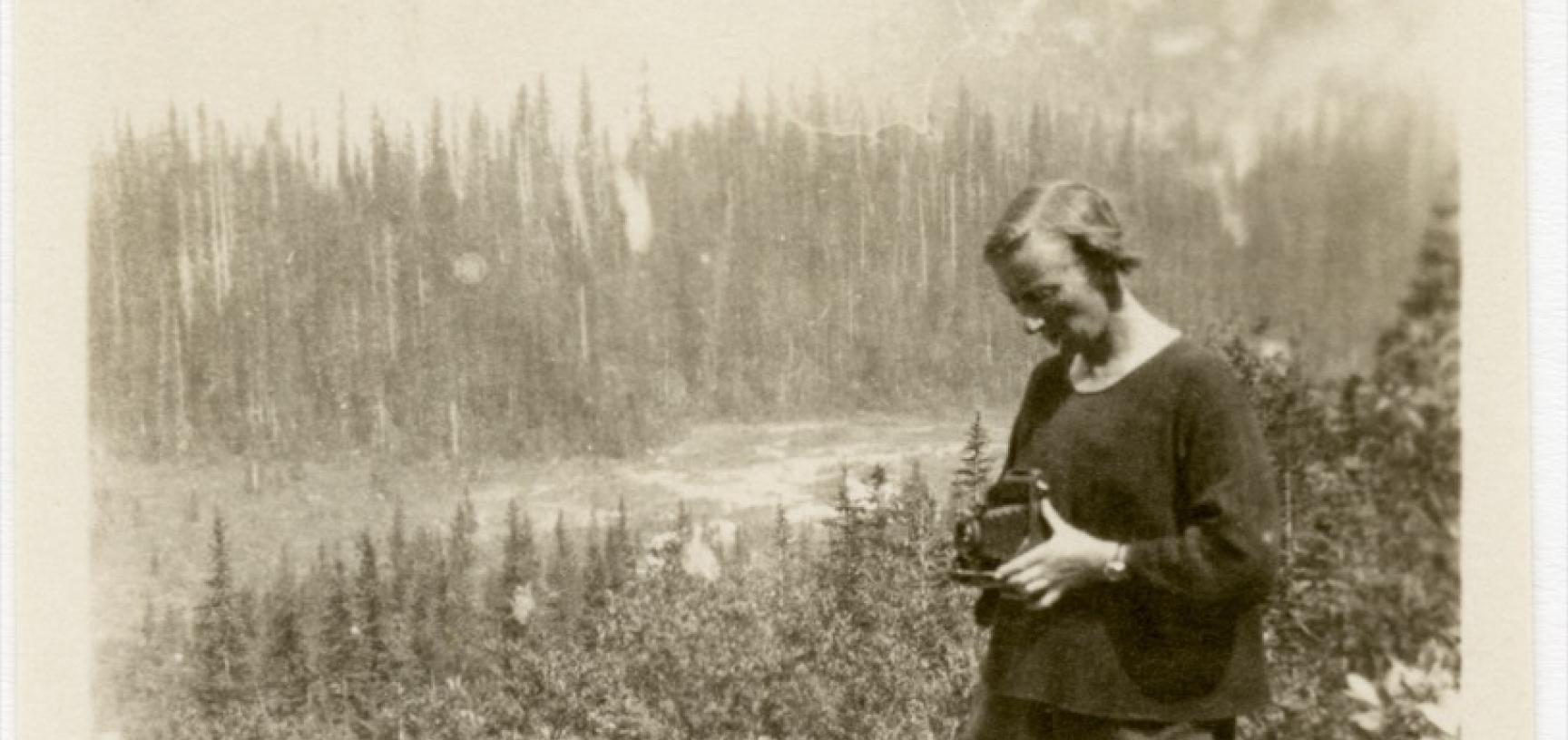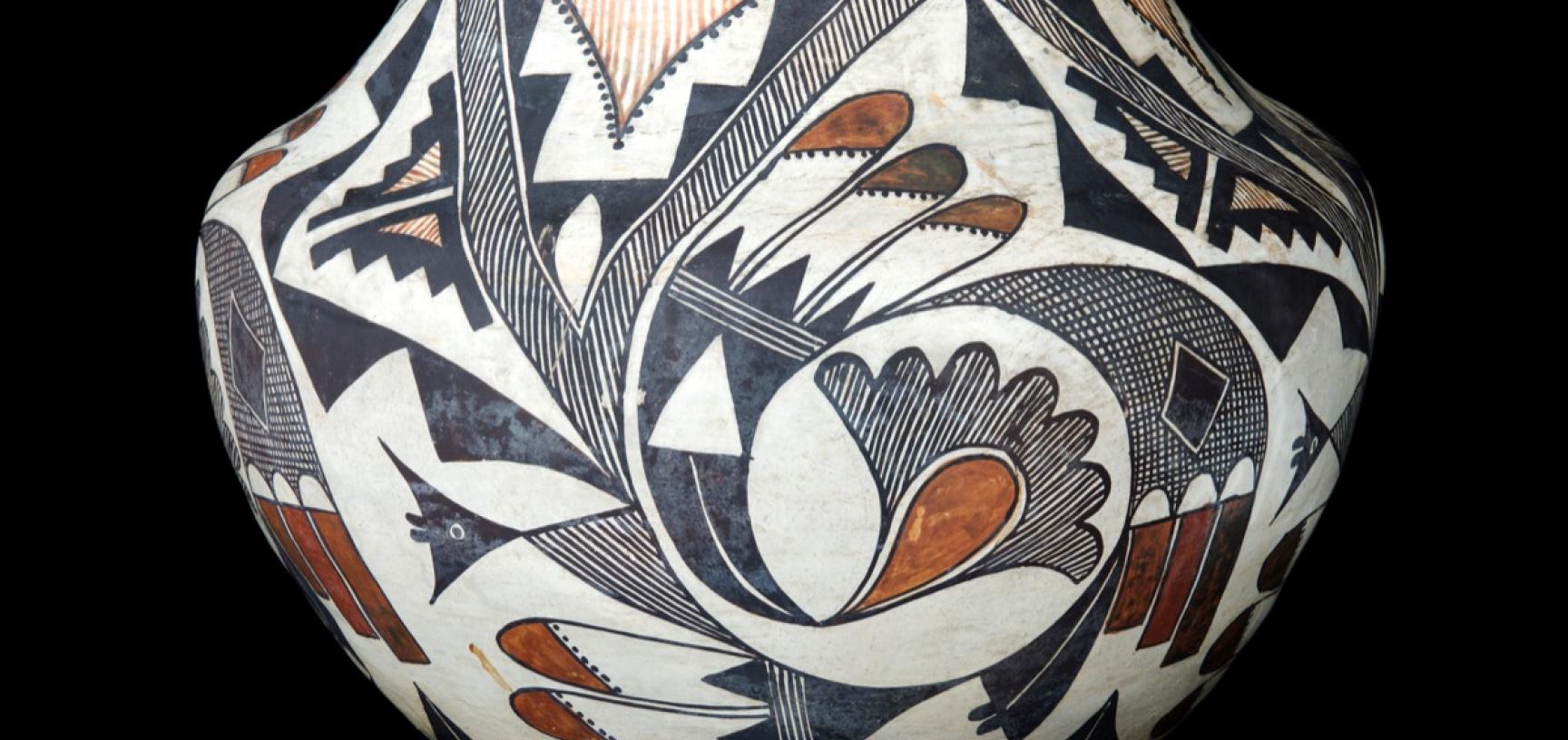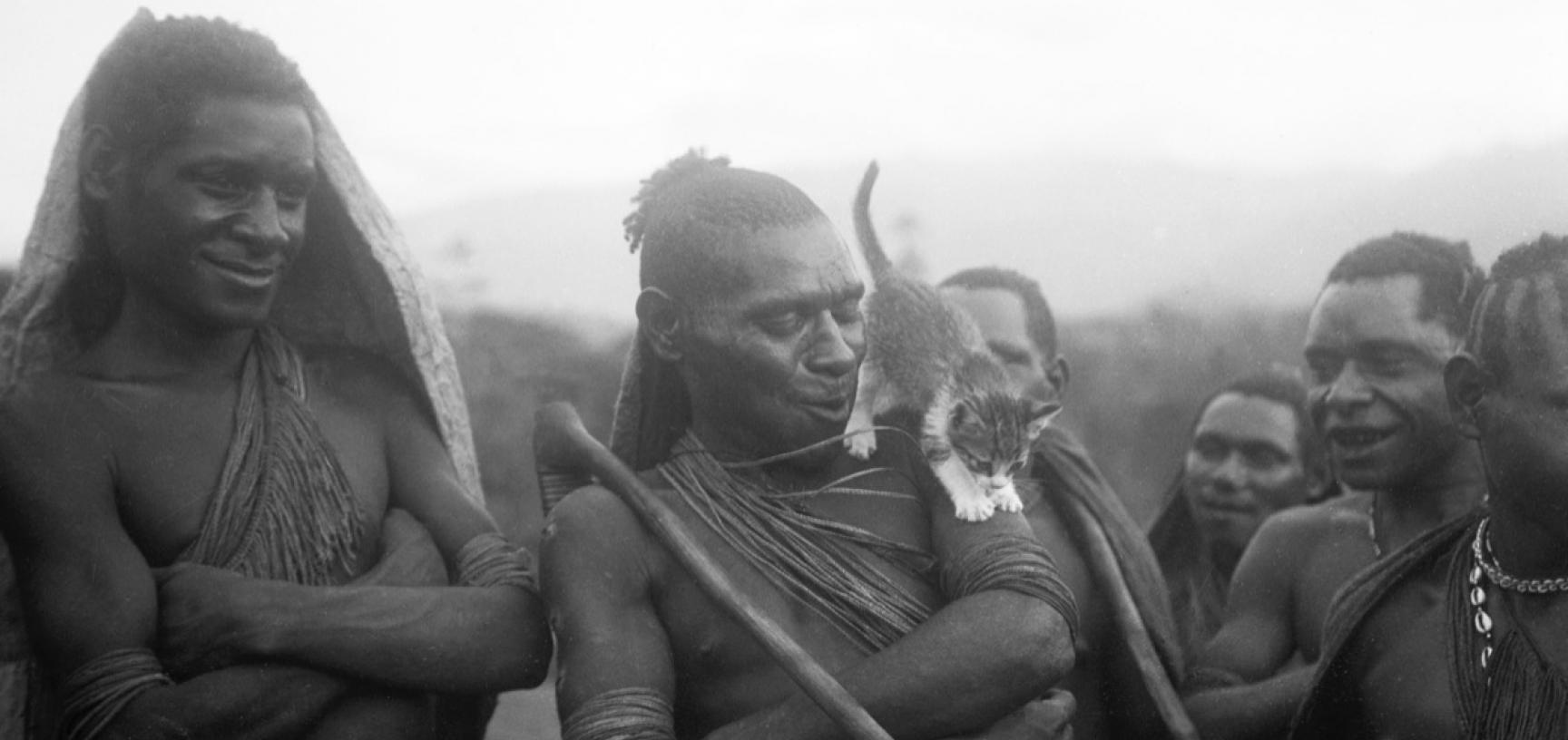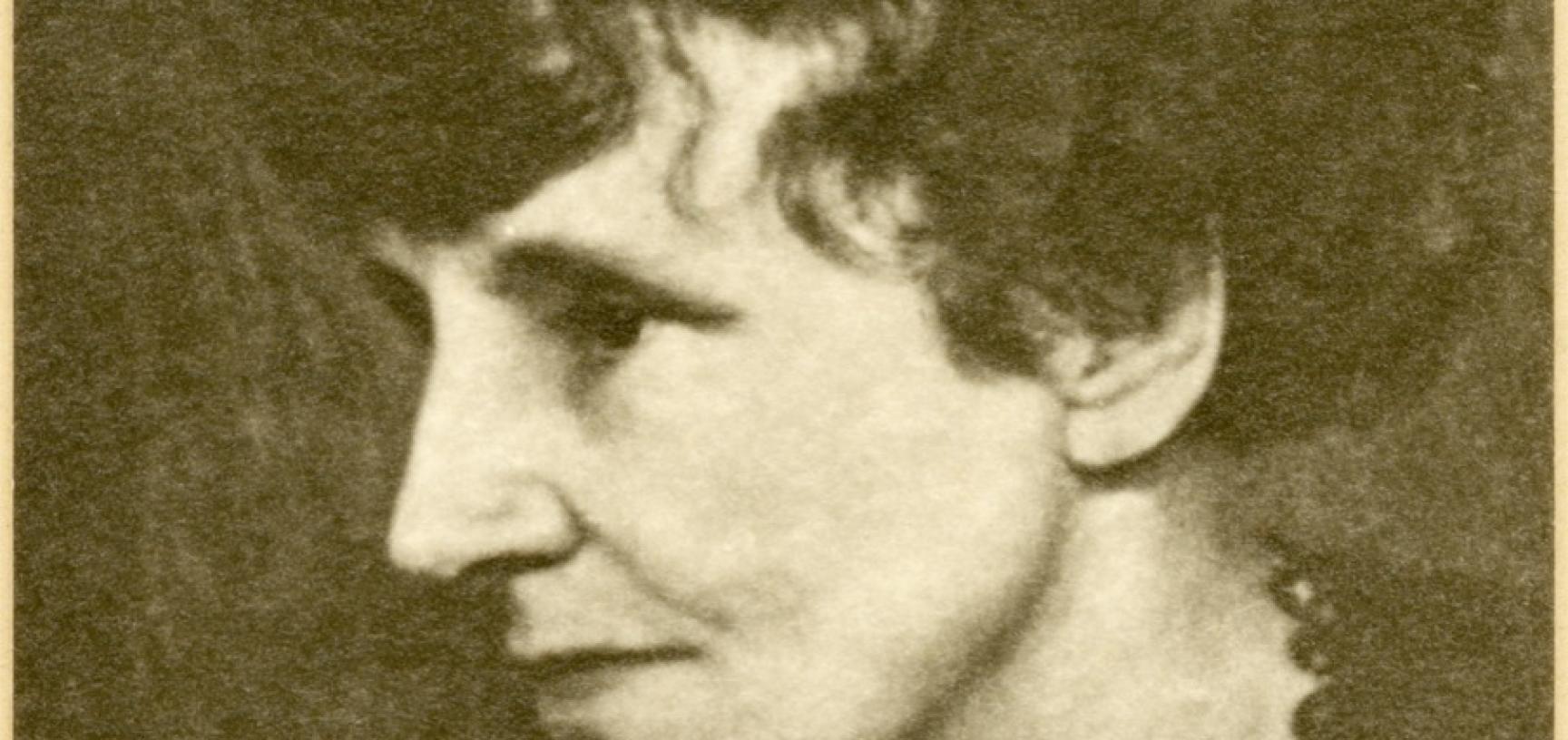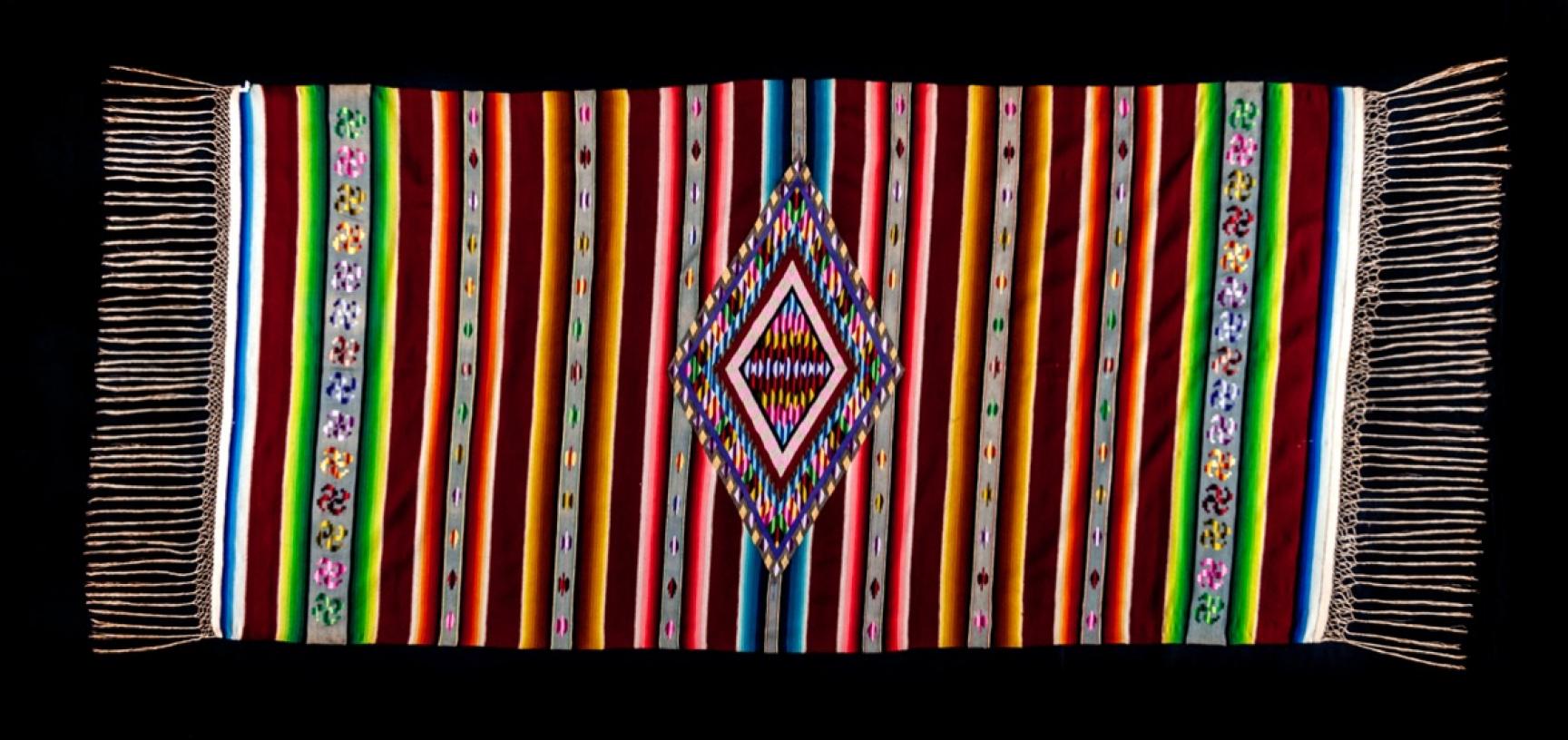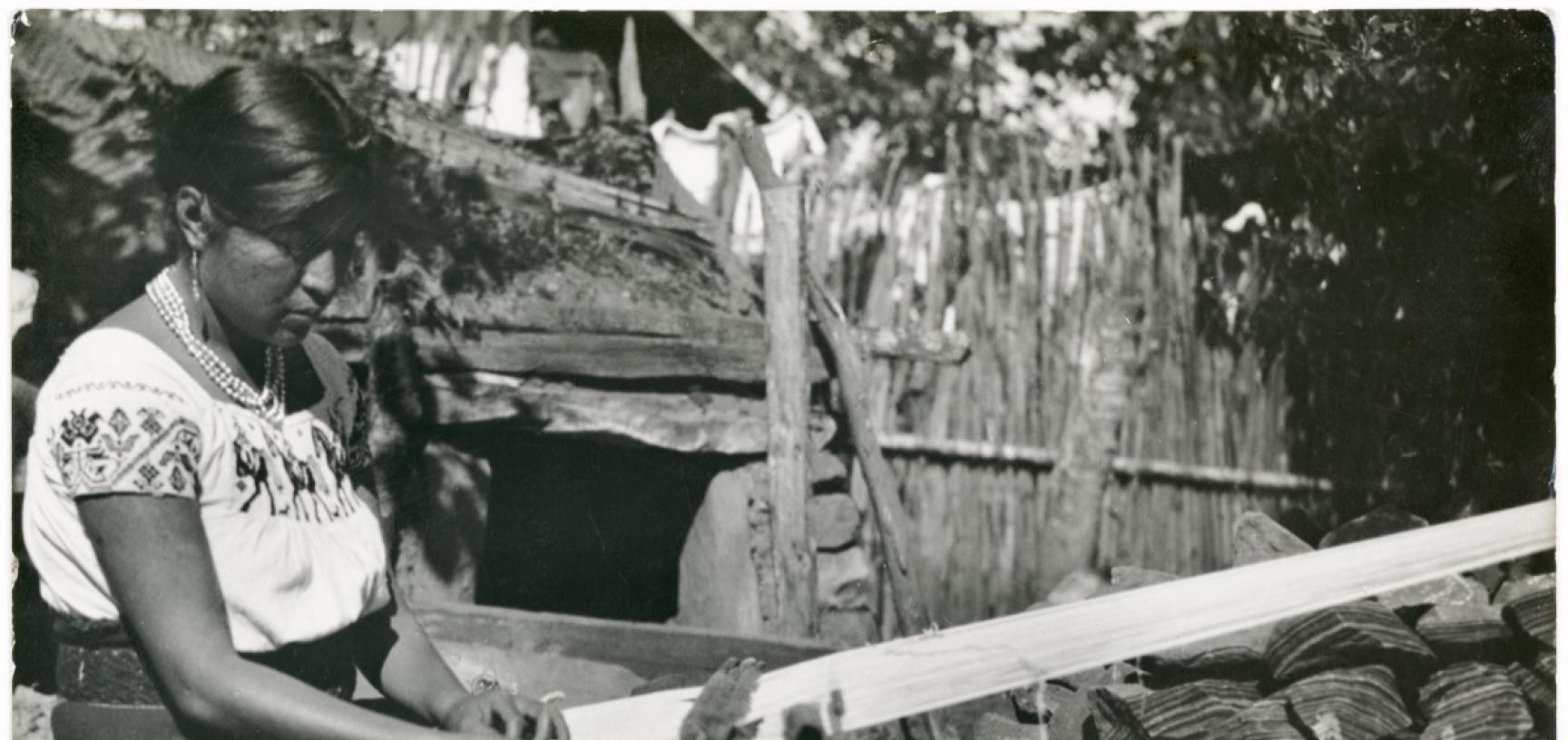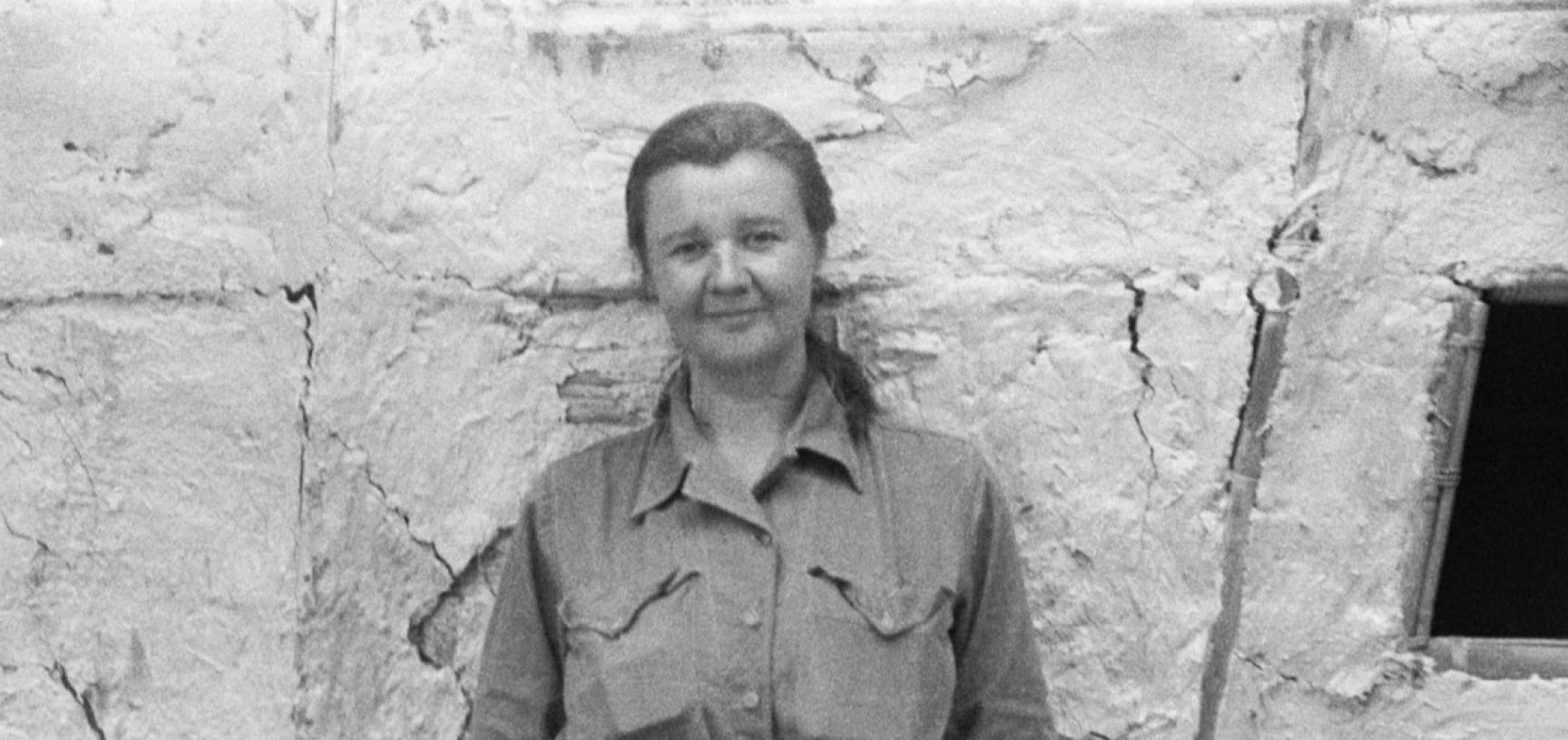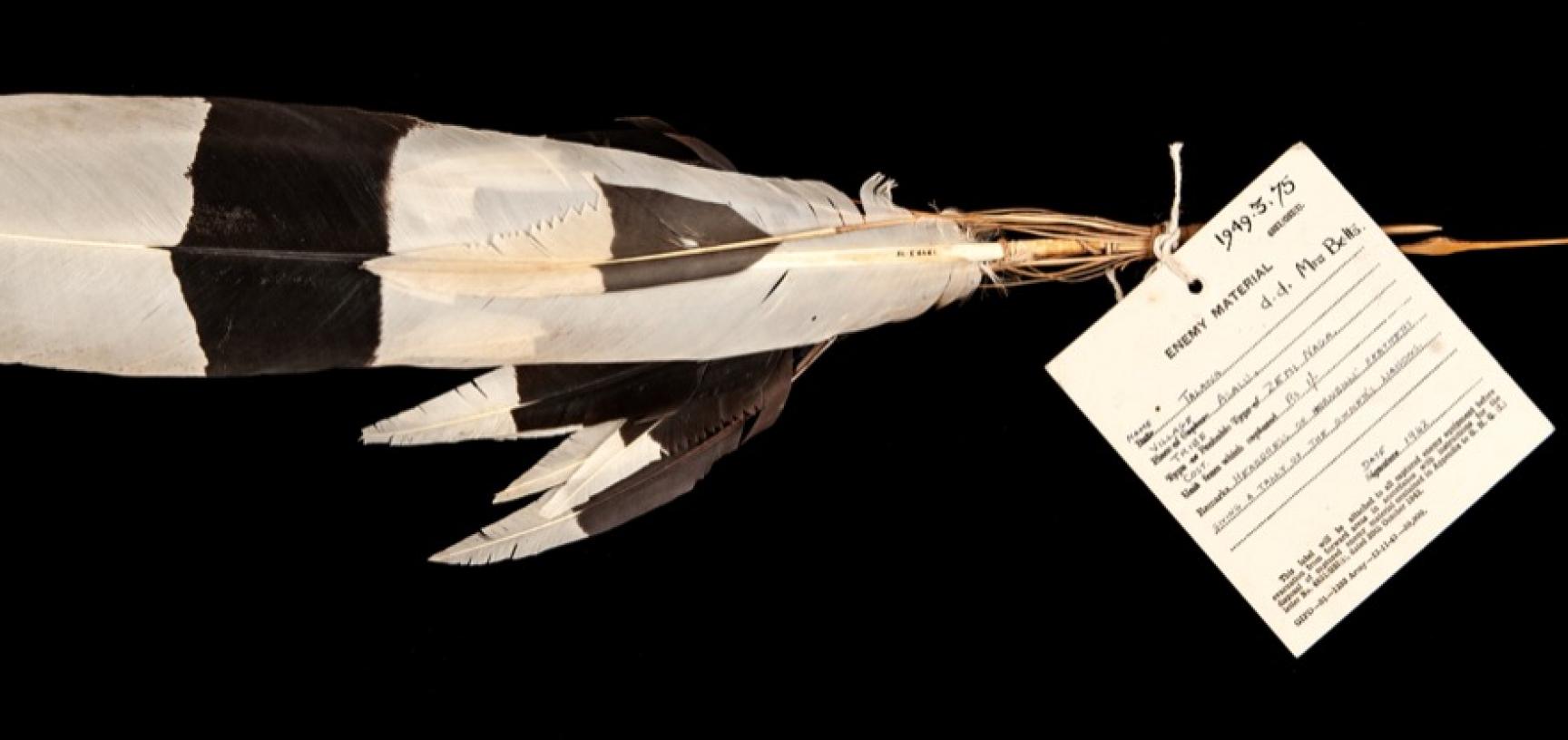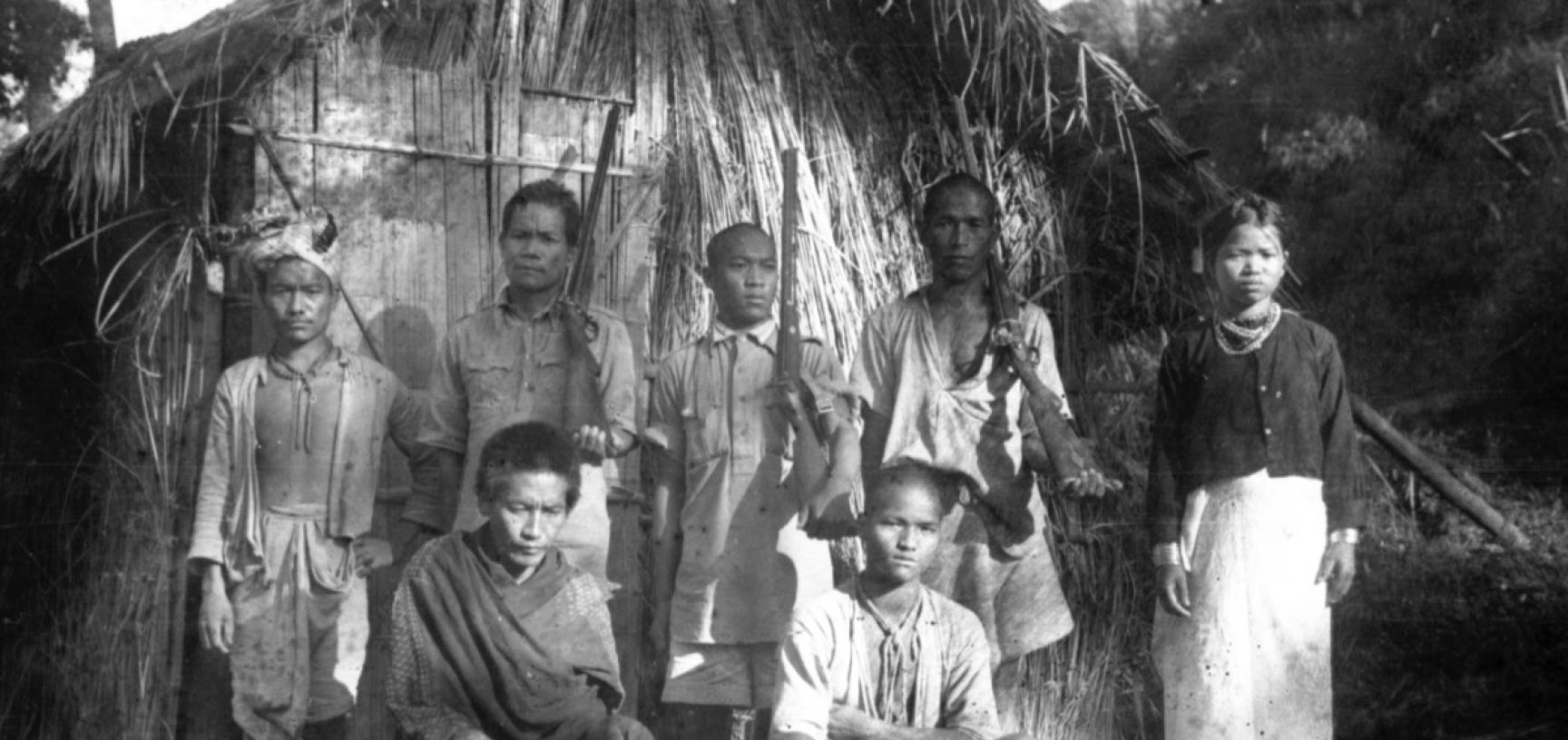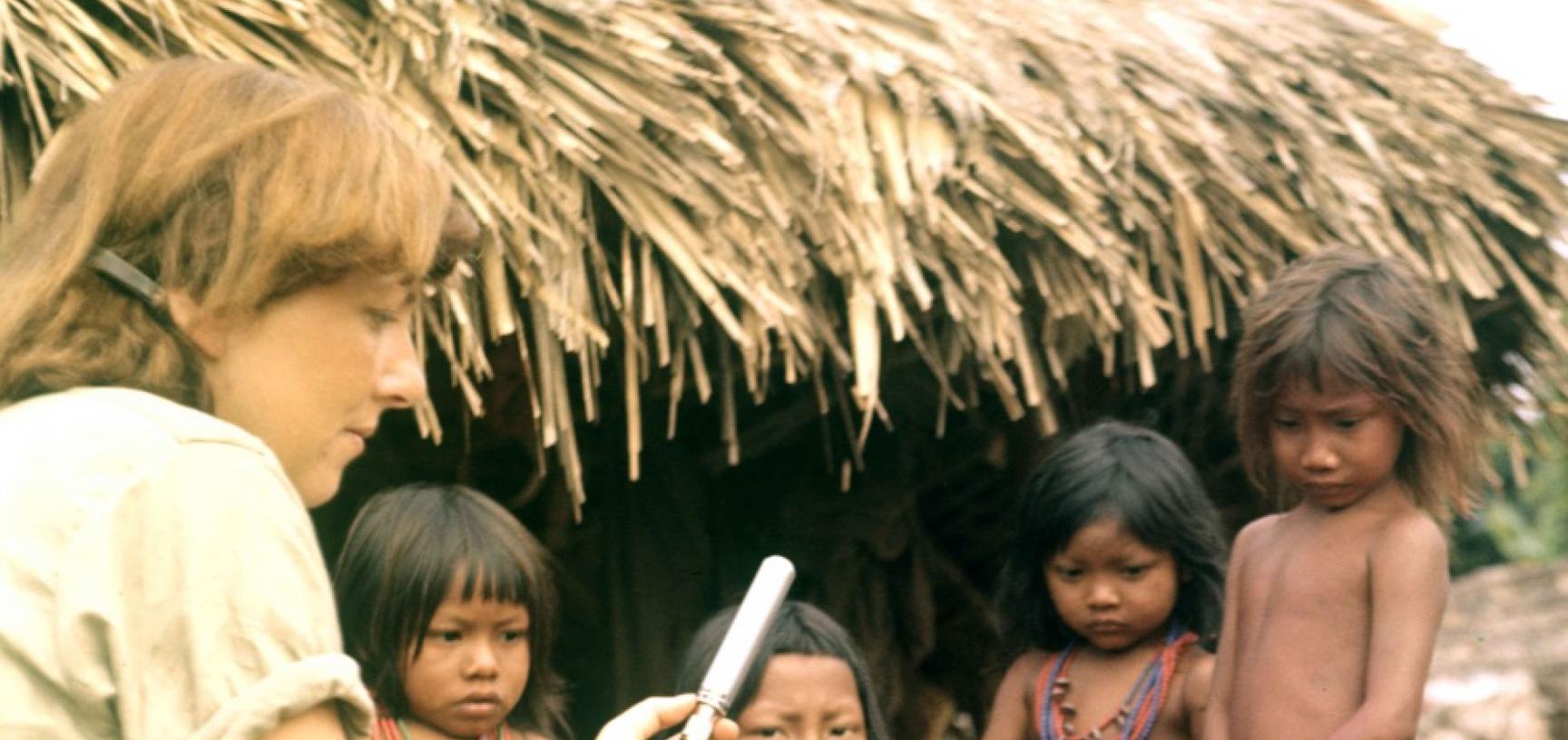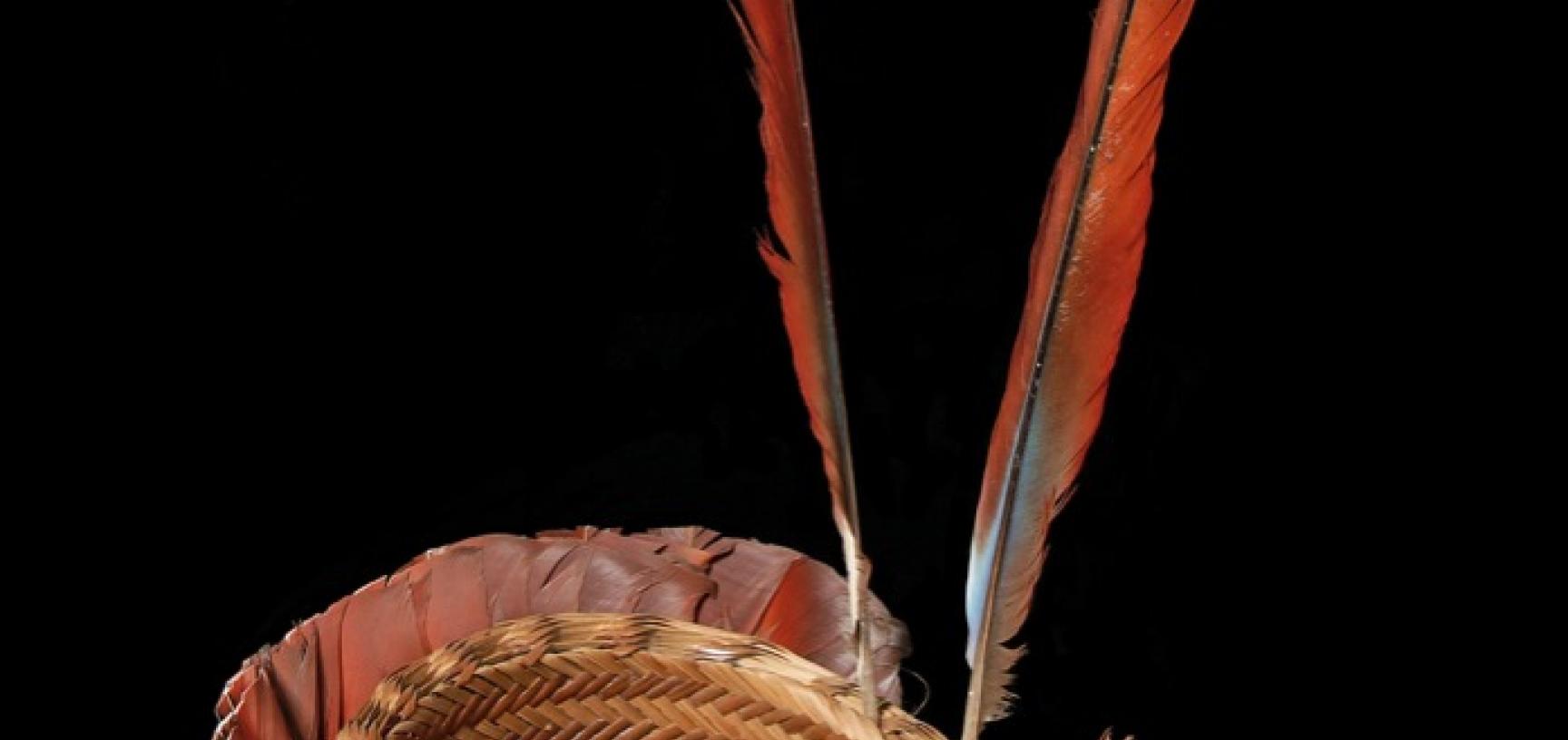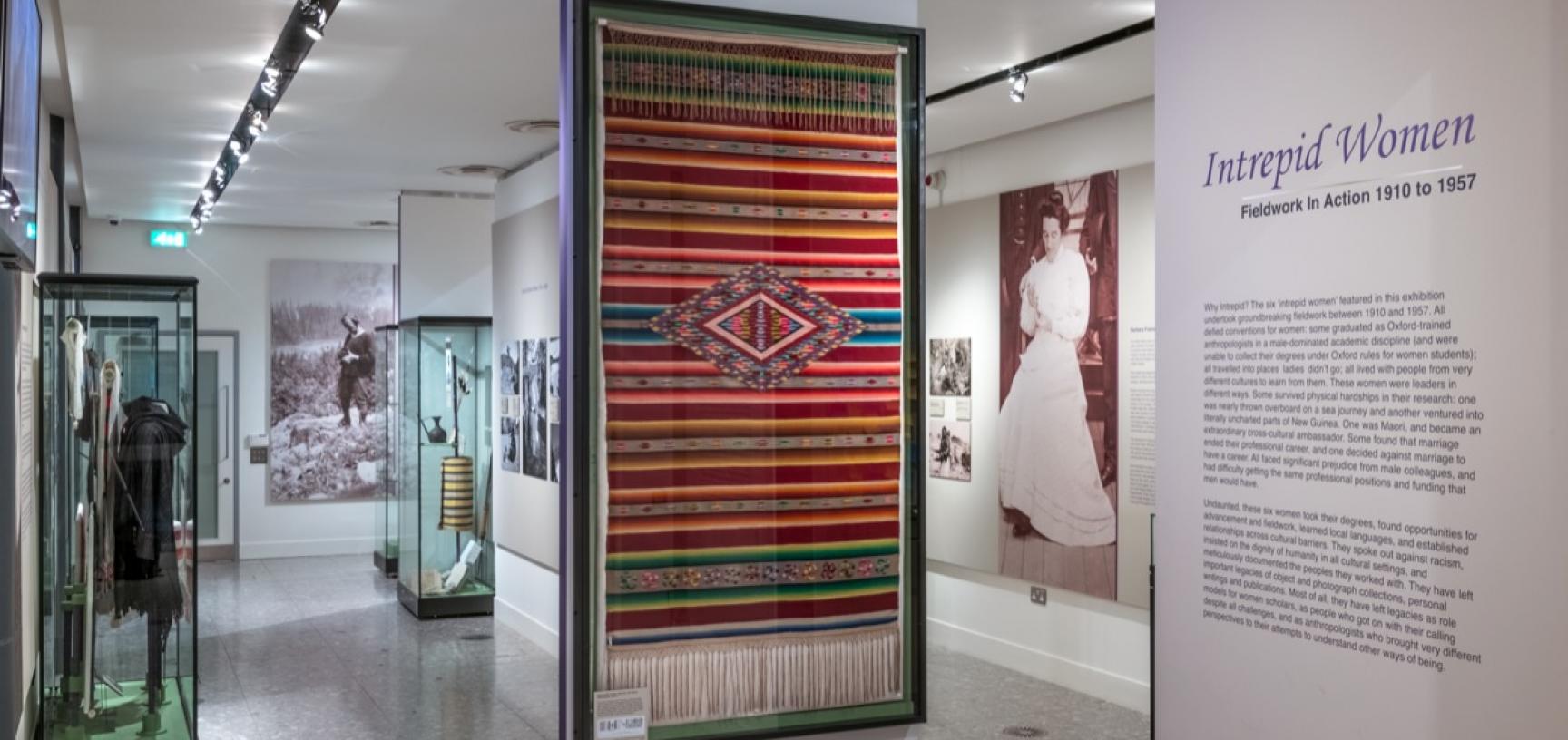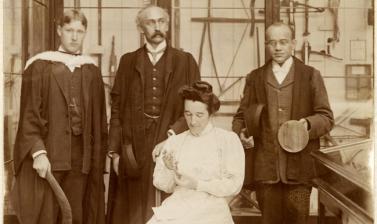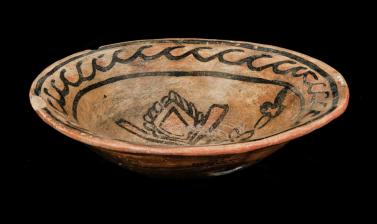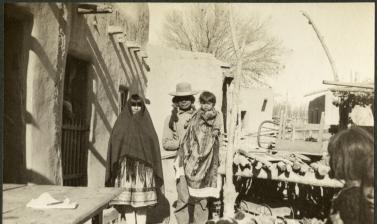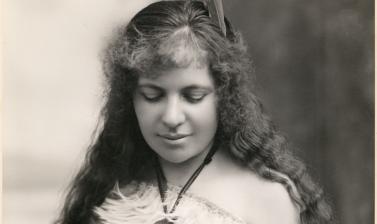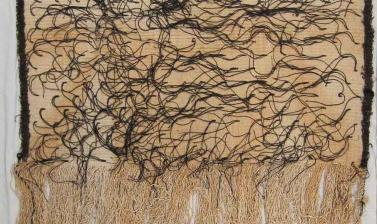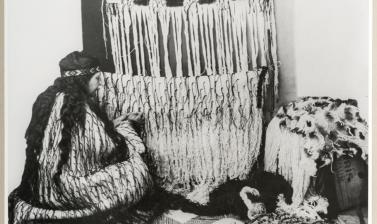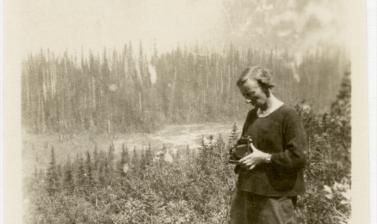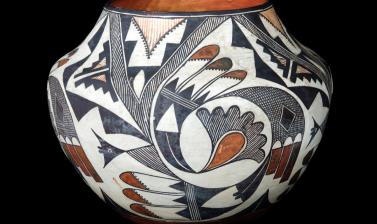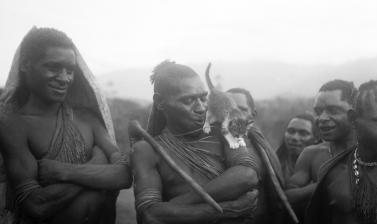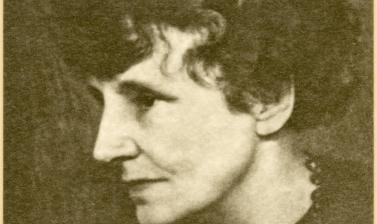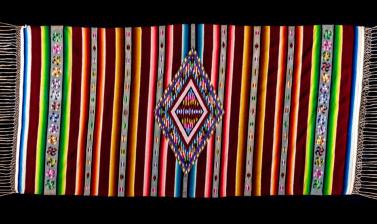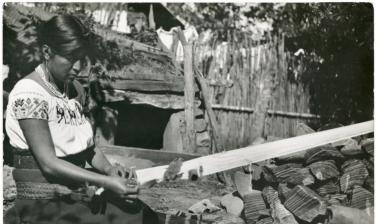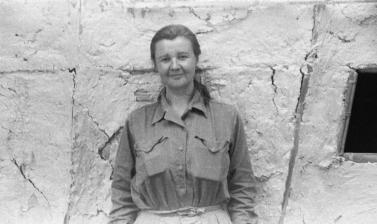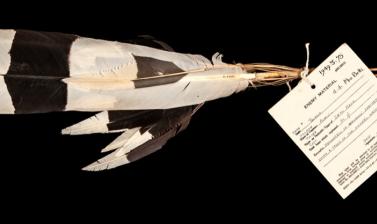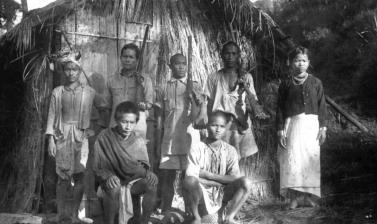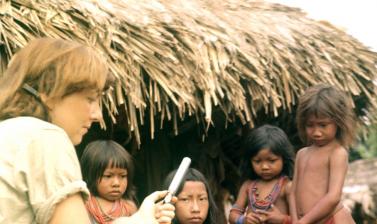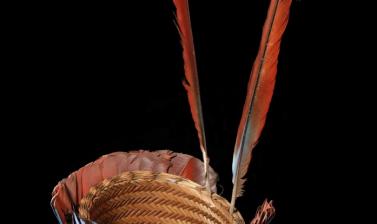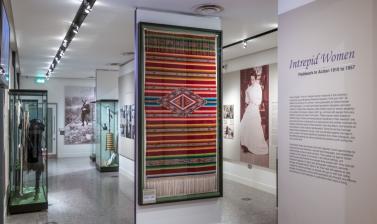Intrepid Women: Fieldwork in Action, 1910–1957
This exhibition focuses on six of the Pitt Rivers Museum’s most important female collectors and their fieldwork carried out between 1910 and the late 1950s. It is a unique opportunity to see objects and photographs resulting from their travels, as well as original archival material and film on display for the first time.
Why intrepid? The six ‘intrepid women’ featured in this exhibition undertook groundbreaking fieldwork between 1910 and 1957. All defied conventions for women: some graduated as Oxford-trained anthropologists in a male-dominated academic discipline; all travelled into places ‘ladies’ didn’t go; all lived with people from very different cultures to learn from them. These women were leaders in different ways. Some survived physical hardships in their research: one was nearly thrown overboard on a sea journey and another ventured into literally uncharged parts of New Guinea. One was Māori, and became an extraordinary cross-cultural ambassador. Some found that marriage ended their professional career, and one decided against marriage to have a career. All faced significant prejudice from male colleagues, and had difficulty getting the same professional positions and funding that men would have.
At a time when men controlled the discipline of anthropology and Oxford refused to allow women to collect their degrees, Barbara Freire-Marreco (1879–1967) was the first women to enrol on the Oxford Anthropology Diploma in 1906. She became the first trained English female anthropologist, achieving a Distinction for the Diploma in 1908, and was the first English female anthropologist to do anthropological fieldwork in the United States.
She made two fieldwork trips to North America, the first from 1910 to 1911 and the second in 1913. She worked mostly in New Mexico, living in Santa Clara with Pueblo people, and did some fieldwork at Fort McDowell, Arizona, with Yavapai people. She intended to make a third fieldwork trip but the outbreak of the First World War prevented this and after meeting her future husband in 1916 she gave up pursuing an academic career.
She did keep in touch with people from Santa Clara throughout her life, indeed in 1910 she had stated: ‘I love the Santa Clara people and could live there for the rest of my life with pleasure, and there are two families there that love me a little too.’ Freire-Marreco meticulously documented the material, including the names of donors and makers, rare for a collection from this period. The care which which she documented items means they continue to be an important resource for the communities she worked with, as well as researchers. (See more photographs by Barbara Freire-Marreco here.)
Makereti (1873–1930), who was born in New Zealand, had a Māori mother and an English father. While living in the Māori village of Whakarewarewa, near Rotorua, she made a name for herself as a tour guide and in 1901 was chosen to escort the Duke and Duchess of Cornwall and York (later to become George V and Queen Mary). A dedicated ambassador for Māori culture, she was gifted in the Māori arts of dancing, song, story-telling and weaving.
She was part of a Māori concert group, demonstrating these skills, that toured Australia and England in 1911 for King George V’s coronation festivities. The tour, which was popular, was not a financial success – plus some performers remained in England for an additional year. Makereti was consequently criticised in the press, plus faced the anger of her community, who held her responsible for the concert party’s safe return. Shortly after this, Makereti became engaged to Richard Charles Staples-Browne, a wealthy Englishman she had met in New Zealand during 1902 or 1903 when working as a guide. She moved to Engand in 1912 to marry him, telling a friend ‘I have no wish to have my name in print again’.
The marriage failed, but Makereti remained in England, only returning to New Zealand in 1927 to conduct fieldwork in Whakarewarewa for her Oxford anthropology degree. Sadly she died in 1930, just two weeks before her thesis was due. Fortunately her manuscript was edited by her friend Thomas Kenneth Penniman, who in 1938 published this as The Old-Time Maori. Although posthumously, this fulfilled her wish, stated in 1906, ‘to write something worth while’.
Born to a wealthy family, Beatrice Blackwood (1889–1975) could have settled for finishing school and a conventional marriage. Instead she applied to Oxford, gaining a degree in English in 1912 and a distinction in 1918 for the Diploma in Anthropology. She worked as a research assistant, and later Demonstrator, in the Department of Human Anatomy within the Oxford University Museum of Natural History. In 1924 she spent three years doing fieldwork in Canada and the United States, spending time in the same Pueblo communities as Freire-Marreco.
Her second fieldwork trip in 1929 was to New Guinea, on the islands of Buka and Bougainville in the Northern Solomons. Few anthropologists had travelled to this region and Blackwood was the first woman anthropologist to do so. In 1935 Blackwood transferred to the Pitt Rivers Museum, becoming the Demonstrator in Ethnology, and then embarked on her third fieldwork trip in 1936 to the interior of New Guinea.
Blackwood never married. She later lectured at Oxford, and put her research into action: during World War II, her lectures featured stern admonishments to students that ‘THERE IS NO ARYAN RACE!’ She retired in 1959 but continued to come in to work at the Museum until a few days before her death in 1975. (See more photographs by Beatrice Blackwood here.)
Elsie McDougall (1879–1961) first travelled to Mexico in 1926, where she began an intensive and life-long study of the materials and techniques of textile production. She made close personal contacts, living among the local communities for extended periods of time, collecting information, textiles, looms and tools used for weaving, spinning and dyeing.
McDougall marvelled at the workers’ technical skill and artistry and sought to document every part of the process through her extensive field notes and photography. Her collecting trips to Mexico and Guatemala continued throughout the 1930s, during which time McDougall became particularly interested in the ikat method of resist-dyeing. She visited distant and isolate Maya villages, seeking evidence that techniques in weaving and dyeing were the continuation of a pre-Columbian tradition.
McDougall had a disregard for her own comfort and thought nothing of arduous journeys on horseback through the night, yet she did not see herself as an adventurous traveller. Perennially modest, McDougall described her work as ‘tentative, kindergarten-method research’, but her methodical and meticulous record-keeping has led to her collection being considered key to the study of Central American textiles. (See more photographs by Elsie McDougall)
https://player.vimeo.com/video/303031729
Ursula Graham Bower: Fieldwork in Nagaland (1939–1944) from Pitt Rivers Museum on Vimeo.
In 1937, at the age of twenty-three, Ursula Graham Bower (1914–1988) visited Manipur and the Naga Hills, a culturally distinct area in north-east India. She was fascinated by the hill communities, especially the Naga, and two years later she returned ‘to potter about with a few cameras and do a bit of medical work’. She gained permission from the British administration to live in Laisong village where she dispensed medicines and carried out anthropological fieldwork among the Zeme (Zeliang) Naga. As well as taking several thousand photographs of exceptional quality with her pre-war Leica camera, Bower shot some of the earliest colour film captured by an anthropologist.
During the Second World War, when the Japanese threatened to launch an invasion of India through the north-eastern hills, the British asked Bower to form a band of Naga scouts as part of the ‘V Force’ guerilla unit. Her forces became so effective that the Japanese put a price on her head.
Bower made many close friends during her fieldwork and maintained these relationships throughout her life. She hoped to improve understanding between the Zeme and the British through her writing, with her book Naga Path providing lively insights into Naga ways of life. She eventually earned a University of London diploma for her study of Zeme discontent with the British administration and in later years was a vocal critic of the treatment the Naga received from the authorities, raising the issue with the British and Indian governments. (See more photographs by Ursula Graham Bower here.)
Audrey Butt Colson (b. 1926) started doing fieldwork in the Upper Mazaruni District of Guyana in the 1950s. The exhibition includes clips from a film she made in 1957 about the cultivation techniques of the Akawaio people. An Oxford University Lecturer from 1955 to 1982, she originally intended to use the film to teach anthropology and geography students attending her Social Ecology lectures.
Butt Colson is keen for this film to be seen so that as many people as possible are aware of the existence of the Akawaio people and their claim for legal title to their ancestral lands. Since 1946 planes have brought outsiders to the Upper Mazaruni, a region previously difficult to access – involving a long and perilous journey up the Mazaruni River, plus a three-day climb by forest trail up the Pakaraima escarpment. Tragically, gold and diamond mining has polluted the river system and caused social, cultural and economic upheaval in the region.
Butt Colson’s fieldwork and film provides evidence to show how – until the disruption caused by outsiders – the Akawaio and Arekuna communities always looked after their land, which they have ‘sustainably managed and left pristine, down the generations from pre-colonial times to the present day.’ In 2012 a High Court judge even ruled Butt Colson could not appear as an expert witness in a land suit brought about by Akawaio and Arekuna communities ‘because of her prior support of the plaintiffs’ position’. In addition, in a 2013 report published by Survival International she firmly states: ‘Areas in which indigenous peoples live and on which they depend for basic resources for living should be off limits for mining, logging, flooding and any form of environmental destruction.’
All of the women included in this exhibition have left important legacies of object and photograph collections, personal writings and publications. The exhibition is an opportunity to have an insight into their lives and to see parts of these valuable collections. In addition, they have all left legacies as role models for women scholars, as people who got on with their calling despite all challenges, and as anthropologists who brought very different perspectives to their attempts to understand other ways of being. We hope you will visit this exhibition and take inspiration from their stories.
Acknowledgements and Credits
- Exhibition curated by Joanna Cole, Zena McGreevy and Julia Nicholson
- Conservation by Andrew Hughes, Jennifer Mitchell and Jeremy Uden
- Digitisation by Katherine Clough and Philip Grover
- Photographs printed by B2B Graphics
- Video editing by Katherine Clough
- Design and installation by Alan Cooke and Chris Wilkinson
- Print design by Alan Cooke
- Public engagement by Beth McDougall and Andrew McLellan
- Special thanks to Audrey Butt Colson, Catriona Child, Leo Colsell, Vibha Joshi, Alison Kahn, Frances Larson, Christopher Morton, Tim Myatt, Mike Peckett, Laura Peers and Jaanika Vider
